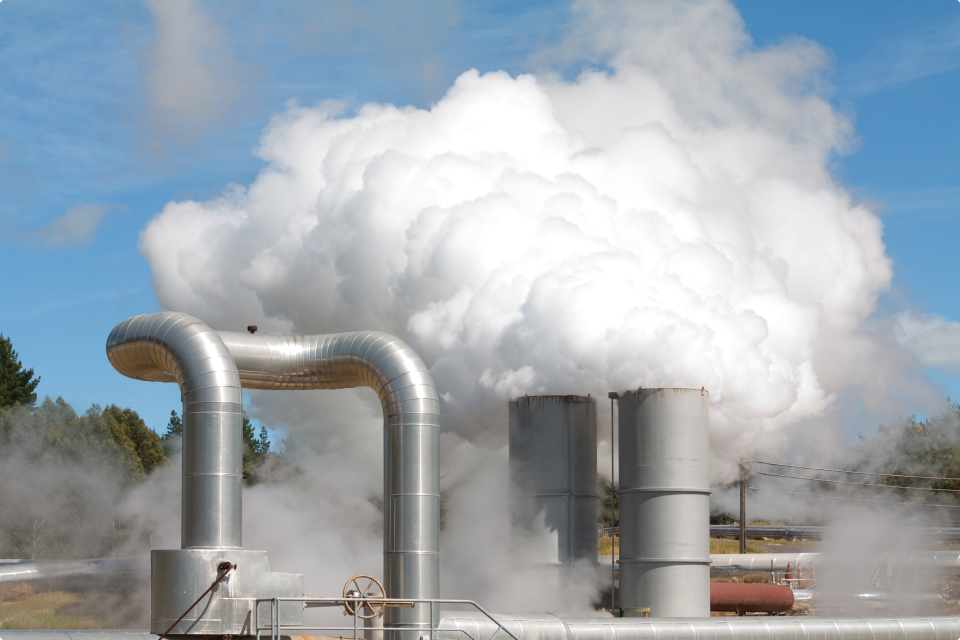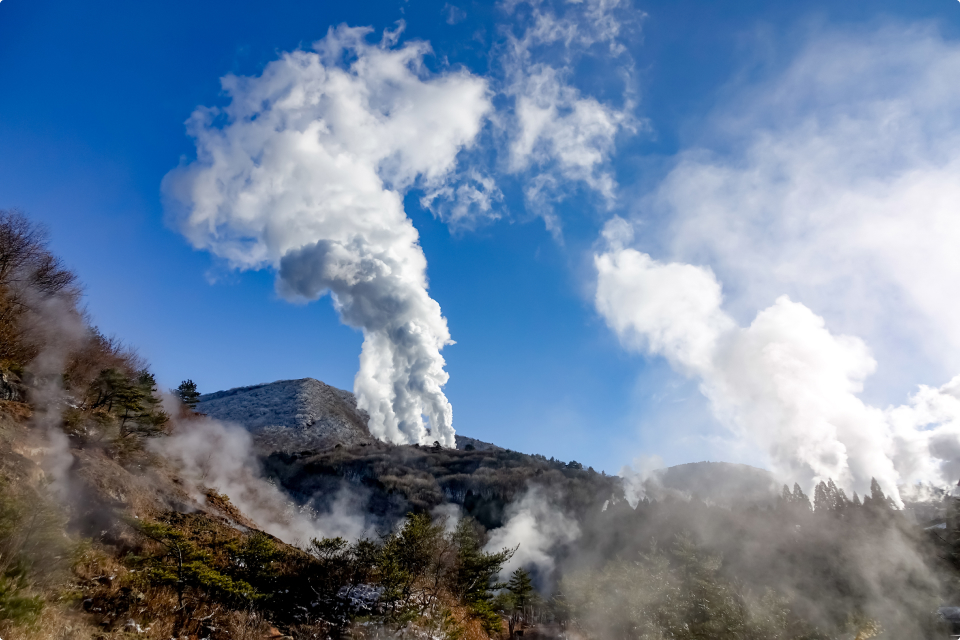Development of products for deep geothermal power generation
Taking on the challenge to use supercritical geothermal power to change the global energy environment with the heat of the earth
Geothermal power generation is attracting attention as a clean energy source

Clean energy is a major factor in decarbonization. Securing energy sources alternative to oil and gas is a major step for humanity to achieve a sustainable society. Energy sources that do not emit CO2 include nuclear, hydro, wind and solar power, and biomass. Among them is geothermal power.
Covered by magma and mantle, the earth's core temperature is approximately 7,000°C, and its thermal energy is almost infinite. In geological layers where the temperature reaches over 200°C at 1.5 km to 2 km underground, rainwater, etc. accumulates in bedrock in a heated state. Geothermal power generation is a mechanism in which thermal water deep in the ground is extracted as steam to turn turbines for power generation.
Among other clean energy sources, geothermal power has very unique characteristics. It is not affected by weather or climate, unlike hydro, wind, and solar power, and does not require large sites. It continues to generate power steadily for 24 hours at small-scale power generation facilities. On the other hand, underground temperatures vary greatly by location, limiting points that are easy to excavate. For this reason, geothermal power is creating new resource-rich countries.
Japan is one of the world's leading geothermal resource-rich countries
Japan is one of the world's leading resource-rich countries. Japan has the world's third-largest reserves of geothermal resources, with many spots of accumulated magma, such as volcanoes and plate boundaries. It has the potential to become the energy powerhouse of the future.
Nevertheless, the amount of geothermal power generation only accounts for 0.2% of total power generation in Japan. Geothermal power plants are time-consuming and expensive to build, and because they contain hazardous gases in the ground, safety considerations must be taken into account when processing them above ground. EBARA has been committed to advancing and promoting geothermal power generation as a rare manufacturer boasting technologies for most of the major devices for geothermal power plants, including pumps, turbines, cooling towers, and condensers.
The field of geothermal power now faces a significant challenge. This challenge is deep/supercritical geothermal power. Materials with extremely high temperatures of 400 - 500°C were found in magma reservoirs 3 km - 6 km underground, which are deeper than previously known. The fact is that it is fossil seawater drawn in when the plate sank, turning it into a mysterious fluid that is neither liquid nor gas. Supercritical geothermal fluid is extremely toxic and corrosive at high temperatures and pressures. However, one magma reservoir is estimated to have the thermal energy of 30 nuclear reactors. Currently, the potential for electricity production of about one tenth of a nuclear reactor is predicted for a region in Japan and a trial drilling has started for a magma reservoir at great depths. The goal is a pilot plant in the 2030s. And a large-scale plant in the 2050s.
EBARA's challenge to generate “supercritical geothermal” power

Engineers throughout the world are taking on the challenge of researching and developing supercritical geothermal power generation that could significantly transform the energy environment of the future. Against this backdrop, EBARA, as a specialist in fluid control that has been manufacturing pumps for many years, has been promoting the development of supercritical geothermal power generation, an area in which no one has yet succeeded. We have a track record with conventional geothermal pumps, as well as the strength of turbines that can generate electricity with steam. We also have knowledge of various materials and corrosion resistance and extensive experience in mixed gas compression. Consolidating our achievements to date, EBARA strives to accelerate our new challenges toward 2050 with increased momentum in order to ultimately realize a living environment with clean energy in the future.





